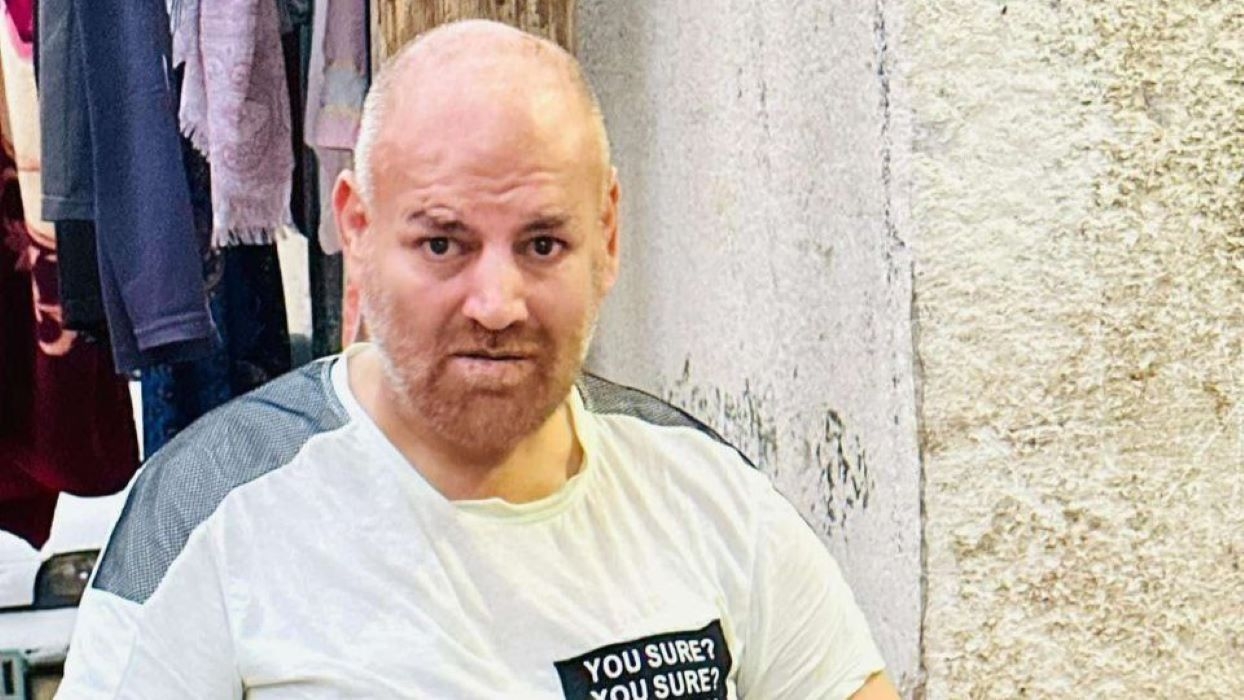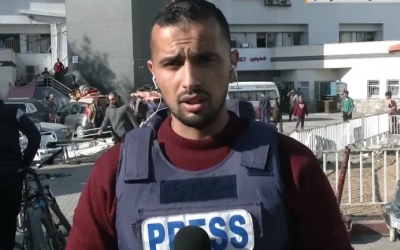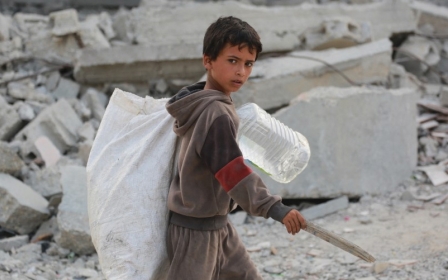War on Gaza: Disabled Palestinian's body found after Israeli attack on Khan Younis

Editor's note: This article contains details and images that may be disturbing to some readers
Nine days after fleeing an Israeli assault on southern Gaza’s Khan Younis, the Najjar family returned to their home on Wednesday to find their heavily disabled son dead. His body had begun to decompose.
Iyad Muhammed al-Najjar, 47, who suffered from a nervous system disorder, was at home when the Israeli army stormed it after issuing evacuation orders on 22 July.
When the family returned to search for him, they found his body in their neighbour’s yard.
“Iyad could not go to the bathroom or eat without assistance. He was almost paralysed, and his family used to feed him themselves. His movement was not easy and he did not have a wheelchair,” Iyad’s uncle, Azmi Ahmed, told Middle East Eye a few hours after he found his body.
New MEE newsletter: Jerusalem Dispatch
Sign up to get the latest insights and analysis on Israel-Palestine, alongside Turkey Unpacked and other MEE newsletters
Before the latest attack, Israel had already staged two major ground offensives on Khan Younis.
When the bombing intensified, residents believed the operation would be limited to aerial strikes lasting only a few hours.
“So some stayed in their homes and did not evacuate,” Azmi recalled.
Iyad lived with his mother, a cancer patient, and his brother and his family.
Anticipating a short bombardment, the family decided to evacuate. However, they did not have a wheelchair and could not carry Iyad, who was tired.
“They prepared food for him and placed it beside him before leaving with us at around 11.30am, thinking they would return shortly,” Azmi said.
The Israeli military had ordered new evacuations of eastern areas in Khan Younis, previously designated as humanitarian zones, before launching an intensive ground operation.
This operation lasted for about a week and left hundreds of Palestinians dead and wounded, with over 40 killed on 29 July in the last 24 hours of the incursion, according to the Palestinian health ministry. The army withdrew the following day.
Azmi, a 58-year-old resident of the Bani Suheila area in eastern Khan Younis, said some people took shelter in nearby al-Mawasi while others went to the city centre.
“But the two hours extended to more than eight days,” he said.
'Those who choose not to relocate from northern Gaza to the southern side of Wadi Gaza may be identified as accomplices of a terrorist organisation'
- Israeli army
“As the days passed, we were very worried about Iyad, but we could not return to evacuate him as we learnt that the army was in our neighbourhood.
"When the army withdrew this morning, we immediately returned to the area, only to find it completely destroyed. The buildings were either demolished or damaged and burnt. Even tents were completely burnt and destroyed.”
Azmi, who lives next to Iyad’s family, was the first to return to their home to look for him.
“I entered the house and found it in complete chaos. The furniture was destroyed and overturned, cupboards were open and searched, so I knew that the army had entered and searched the house,” he said.
“I looked for Iyad but did not find him. However, there was a foul smell filling the place. I followed the smell to the neighbour's house, which was destroyed. I found Iyad lying on the ground on the right side of the yard. He was covered with two blankets. I lifted the blankets and found his body. It had started to decompose, with worms beginning to eat its different parts."
'Severe decay'
Azmi says that because of the severe decay of his nephew's body, the family was unable to determine the cause of his death.
"Nothing was clear about his body. We could not determine if he had been executed or killed in another way. No distinct marks were visible on his severely decayed body,” he said. “The scene was horrifying, and I could barely bring myself to look at his body for more than a moment."
“To determine the nature of his killing, forensic analysis of the body is required. However, this is not currently available given the situation,” Azmi concluded.
“So I covered his body again and took it to Nasser hospital.”
Earlier this month, the family of Muhammed Bhar, a 24-year-old Palestinian man with Down syndrome, discovered his decaying body in their family home in Gaza City a week after being forced at gunpoint to leave.
Muhammed had been mauled by an Israeli army combat dog when Israeli soldiers raided his home.
After initially telling journalists it was looking into reports about Muhammed, the Israeli army admitted that the soldiers who were treating him abandoned him to help soldiers injured in an RPG missile attack on their tank.
Since 13 October, Israel has issued numerous evacuation orders to residents across various parts of the Gaza Strip. Those who fail to comply with these orders are often regarded as "accomplices of a terrorist organisation”.
In leaflets dropped over Gaza during the first month of its war on the enclave, the Israeli army issued an "urgent warning", stating: "To the residents of Gaza: your presence north of Wadi Gaza endangers your life. Those who choose not to relocate from northern Gaza to the southern side of Wadi Gaza may be identified as accomplices of a terrorist organisation."
Consequently, the Israeli army has conducted numerous field executions of Palestinians in the homes and neighbourhoods that were not evacuated as ordered by the military.
Middle East Eye delivers independent and unrivalled coverage and analysis of the Middle East, North Africa and beyond. To learn more about republishing this content and the associated fees, please fill out this form. More about MEE can be found here.





